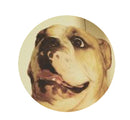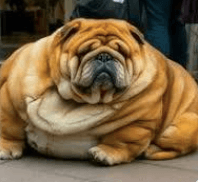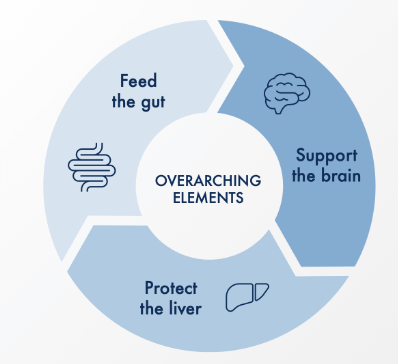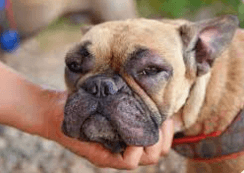Food coloring in dog food is toxic. There are two types of food colors - food dyes and lake colors. Food dyes are made from petroleum or crude oil. Organic food lake pigments are made from natural pigments and inorganic lake pigments are made from metallic sources. According to this article, "food dyes, synthesized originally from coal tar and now petroleum, have long been controversial because of safety concerns. Many dyes have been banned because of their adverse effects on laboratory animals or inadequate testing." Consumption of these artificial food colorings, like the amount food in eating kibble everyday, is linked to disease. Food coloring in dog food is toxic.
Food dyes are water soluble and typically manufactured as powders, granules or other customized forms. Food lakes colors are are made by combining dyes with metals to create insoluble compounds (Read more here). However, there are organic and inorganic lake pigments. Organic lake pigments are more expensive compared to inorganic like pigments and are much safer to consume. Examples of each include:
Organic Lake Pigments:
- Organic Caramel (not caramel color)
- Annatto- a reddish-orange dye made from achiote seeds
- Organic Beet Juice Powder
- Beta-carotene - a red-orange pigment obtained from plants
- Organic Turmeric Powder
- Organic Berry Juice
- Organic Elderberry Concentrate
- Paprika
- Riboflavin
Inorganic Lake aka Aluminum Lake Colors:
- Lake Allura Red
- Lake Amaranth
- Lake Brilliant Blue FCF
- Lake Carmosine
- Lake Erythrosine
- Lake Indigo Carmine
- Lake Ponceau 4R
- Lake Quinoline Yellow
- Lake Sunset Yellow
- Lake Tartrazine
- FD&C Blue No.2 Lake
- FD&C Blue No. 1 Lake
- FD&C Red No. 40 Lake
- FD&C Yellow No. 5 Lake
- FD&C Yellow No. 6 Lake
- FD&C Green No. 3 Lake
According to this article, "food dye is nutritionally void, adding no additional calories, vitamins, or minerals. Its sole purpose is to make products more colorful for the pet parent." The most commonly used Lakes are FD&C Blue 1, Blue 2, Green 3, Red 40, Yellow 5 and Yellow 6. They are cheaper than natural alternatives and extend the shelf-life of the food. Generally speaking if "food," aka kibble, is deemed edible after 6 months + of sitting on a shelf, it doesn't mean it is actually healthy to consume.
Unfortunately, consumption of these food dyes and lakes is linked to disease. According to this study, nine of the dyes approved in the US "raise health concerns of varying degrees." Red 3 causes cancer in animals, and there is evidence that several other dyes are carcinogenic. Three dyes (Red 40, Yellow 5, and Yellow 6) cause hypersensitivity reactions." Additionally, Dog's Naturally states, "some dyes have cancer-causing effects. Others can trigger allergic reactions. Artificial food dyes have zero nutritional benefit, and they are all toxic in some degree...whether contaminated, carcinogenic, allergenic, or genotoxic (meaning they can damage DNA)."
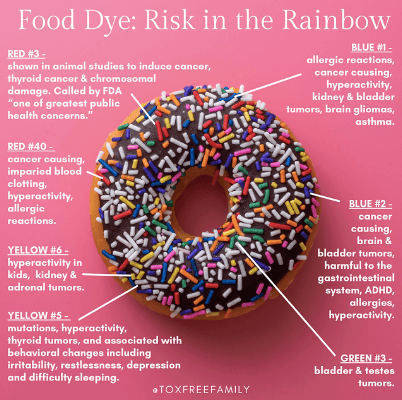
The following list contains just a few brands and blends that contain food dyes and we recommend avoiding at all costs:
- Cesar Filet Mignon Flavor & Spring Vegetables: FD&C Red No. 40, FD&C Yellow No. 5, FD&C Blue No. 22
- Kibbles 'n Bits Original Savory Beef & Chicken Flavors: FD&C Yellow No.5, FD&C Yellow No. 6, FD&C Red No.40, FD&C Blue No.1
- Pedigree High Protein Adult Dry Dog Food Beef and Lamb Flavor Kibble: FD&C Yellow No. 6, FD&C Red No. 40, FD&C Yellow No.5, FD&C Blue No. 2
- Pedigree Complete Nutrition Adult Dry Dog Food Grilled Steak & Vegetable Flavor Kibble: FD&C Red No. 40, FD&C Yellow No. 6, FD&C Blue No. 2
The following list contains just a few brands and blends of treats that contain food dyes and we recommend avoiding at all costs:
- Dingo Dental Sticks Tartar Control Dental Dog Treats: FD&C Blue No.1, FD&C Yellow No.5
- DreamBone Twist Sticks Chicken Chew Dog Treats: FD&C Red No. 40
- Good 'n' Fun Triple Flavor Kabobs Chicken, Duck & Liver Dog Chews: FD&C Red No. 40, FD&C Yellow No. 6, FD&C Blue #1
- Nutrichomps 6" Mixed Flavor Braid Dog Treats: FD&C Red No.40, FD&C Blue No.1, FD&C Yellow No. 6, FD&C Yellow No.5
- SmartBones Twists Wrapped Chicken Dog Treats: FD&C Blue No. 1, FD&C Red No.40, FD&C Yellow No. 6
- Wholesome Rewards Puppy Variety Biscuit Dog Treats: FD&C Yellow No. 5, FD&C Yellow 6, FD&C Red No. 40, FD&C Blue No. 1)
Food coloring in dog food is toxic. Food coloring in dog treats is toxic. The kibble business is in the business of making the most profit, using the cheapest ingredients possible, even it is at the expense of your animal, which it 10000% is.
If you want your dog to thrive, do not feed this garbage. Feed them a nutrient-dense whole food diet. Read more about raw food here, home-cooked here and supplements here.
Donate to Bobzilla.org

$5.00
The veterinary business is business which is not in the business of curing your animal, but Bobzilla's business is. Bobzilla is committed to one hundred percent transparency in all of its scientific research into animal wellness and prevention of disease and one… read more
